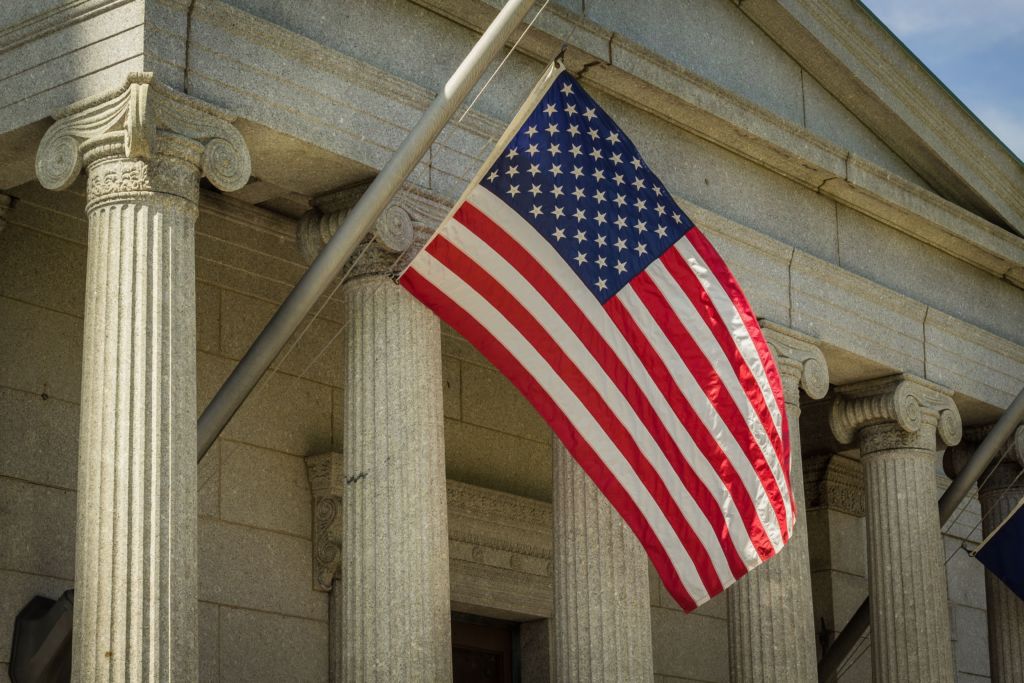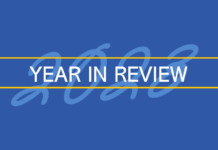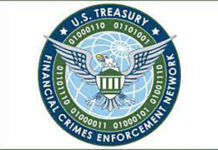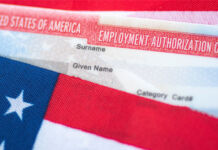
In response to the COVID-19 pandemic that has wreaked havoc on the global economy, President Trump signed into law the Coronavirus Aid, Relief, and Economic Security Act (the “CARES Act”) on March 27, 2020. The full text of the CARES Act can be found HERE. The CARES Act is a major step by the U.S. government to combat some of the disruption caused by COVID-19, not only to the U.S. economy but also to individual Americans across the nation. The purpose of this alert is to highlight certain key provisions that U.S. businesses should be aware of in the coming days, weeks, and months.
Keeping American Workers Paid and Employed Act
Title I of the CARES Act, titled “Keeping American Workers Paid and Employed Act”, expands eligibility requirements and provides additional protections with respect to existing programs administered by the Small Business Administration (the “SBA”). Title I of the CARES Act also expands bankruptcy protections available to small businesses. These modified and additional forms of relief include the following:
1. Paycheck Protection Program. The Paycheck Protection Program (the “PPP”), established by Section 1102 of the CARES Act, allows small businesses to obtain loans between February 15, 2020 and June 30, 2020 that are guaranteed by the SBA and bear interest rates of no more than 4%. The amount of such loans will be determined by a formula based on a business’ average total monthly payroll costs multiplied by 2.5 (not to exceed $10 million). The proceeds of loans obtained under the PPP must be used for specific permitted uses, which include payroll costs, costs of continuing group health care benefits while workers are on paid leave, insurance premiums, employee wages, mortgage interest payments, rent, utilities, and interest payments on any other debt obligations incurred prior to February 15, 2020.
Notably, the PPP also relaxes a number of the SBA’s normal loan eligibility standards. For example, eligibility was extended to (i)businesses (together with their affiliates, except as described below) with less than 500 employees (or the size standard established by the SBA for the industry in which the business operates); (ii) businesses in the accommodation and food service industries that have less than 500 employees in any physical location; and (iii) sole-proprietors, independent contractors, and other self-employed individuals, which were previously ineligible. In determining eligibility, the SBA affiliation rules are also waived for (a) businesses in the accommodation and food service industries; (b) SBA-approved franchises; and (c) businesses that receive financial assistance from a Small Business Investment Corporation (an “SBIC”). However, contrary to earlier drafts of the proposed law, the CARES Act does not specifically waive the SBA affiliation rules for private equity or venture capital portfolio companies. As a result, private equity and venture capital portfolio companies are only eligible for the PPP if they fall under one of the specific exemptions described above (for example, if they receive financial assistance from an SBIC), or if they qualify when aggregated with affiliates under the SBA affiliation rules.
A major benefit of the PPP is that it permits complete deferment of covered loans (including payment of principal, interest and fees) for a period of up to 1 year. The PPP also waives borrower and lender fees, the requirement that a small business must be unable to obtain credit elsewhere, personal guarantee and collateral requirements, and prepayment penalties for any payment made on a covered loan.
In order to apply for PPP loans under Section 7(a) of the Small Business Act, borrowers will need to go through a private lender authorized by the SBA to originate a 7(a) loan. The current SBA 7(a) loan application can be found HERE and the SBA’s application checklist can be found HERE. However, it is expected that the SBA will soon update or replace its current application checklist to reflect the CARES Act amendments set forth in the PPP.
2. PPP Loan Forgiveness. Businesses that obtain a loan under the PPP may qualify for loan forgiveness under Section 1106 of the CARES Act. A recipient of a covered loan is eligible for forgiveness of an amount equal to the sum of certain costs and payments incurred during the 8‑week period beginning on the date of loan origination, including payroll costs, payments of interest on a covered mortgage obligation, payments on a covered rent obligation, and covered utility payments. Amounts forgiven will not be included in the borrower’s taxable income. However, the amount of the loan that qualifies for forgiveness will be reduced if the borrower decreases the number of its employees or their salaries and wages (unless such reductions are eliminated by the employer no later than June 30, 2020). The amount of loan forgiveness will also be reduced by the amount of any EIDL advance (see discussion below).
3. Emergency Economic Injury Disaster Loans (“EIDLs”). EIDLs are direct loans from the SBA that are available to small business owners who experience a temporary loss of revenue due to a declared disaster (such as COVID-19). Section 1110 of the CARES Act expands eligibility for EIDLs applied for between January 31, 2020 and December 31, 2020 (the “Covered Period”). Specifically, during that period, any business, cooperative, employee stock ownership plan, or tribal small business concern with 500 or fewer employees that experiences a temporary loss of revenue due to a declared disaster is eligible for an emergency EIDL. In addition, during the Covered Period, the SBA will waive personal guarantee requirements for loans up to $200,000 and will waive the requirements that an applicant needs to have been in business for 1 year (as long as the business was in operation on January 31, 2020) and be unable to obtain credit elsewhere. However, unlike the CARES Act waiver of the SBA’s affiliation rules for certain businesses under the PPP, the SBA’s affiliation rules are not waived for businesses applying for EIDLs.
Notably, any business eligible to apply for an EIDL may, when they apply for an EIDL, also request an advance of up to $10,000. Section 1110 of the CARES Act requires the SBA to distribute the requested advance within 3 days of receipt of the EIDL application from the applicant, and states that the applicant will not be required to repay the advance, even if the EIDL request is ultimately denied. However, any advance received by a business will be counted for purposes of determining the business’ eligibility for the SBA’s loan forgiveness program. In addition, both the EIDL proceeds and any related advance must be used for one of the allowable purposes provided under Section 7(b)(2) of the Small Business Act, which includes maintaining payroll, providing paid sick leave, paying increased costs due to supply chain interruptions, making rent or mortgage payments, and repaying other obligations that cannot be met due to revenue losses as a result of the disaster.
Businesses can apply for an EIDL directly with the SBA by completing the application found HERE.
4. Subsidy for Certain Loan Payments. Section 1112 of the CARES Act requires the SBA to subsidize certain loan payments owed by eligible businesses. Loans covered by this program include loans (i) guaranteed by the SBA under Section 7(a) of the Small Business Act (including loans made under the Community Advantage Pilot Program of the SBA, but notably excluding PPP loans), (ii) guaranteed by the SBA under Title V of the Small Business Investment Act of 1958 (504 loans), or (iii) made by an intermediary to a small business using loans or grants received under Section 7(m) of the Small Business Act (micro loans). Section 1112 requires the SBA to pay principal, interest, and fees owed on covered loans for the 6-month period beginning with either the next payment due (for covered loans made before enactment of the CARES Act, whether or not on deferment) or the first payment due (for covered loans made up to 6 months after enactment of the CARES Act). Amounts paid by the SBA under this program will be applied such that the borrower is relieved of the obligation to pay such amounts, rather than just deferring the payment of such amounts.
5. Bankruptcy. Under Section 1113 of the CARES Act, the number of small businesses that can obtain relief through Subchapter 5 of Chapter 11 of the United States Code (Small Business Debtor Reorganization) is substantially increased. This is due to the definition of a small business debtor being expanded to include businesses with debt in an amount of up to $7.5 million (excluding debt owed to affiliates or insiders) as opposed to the normal threshold of up to roughly $2.7 million. However, this amended eligibility threshold will only apply during the 1-year period after enactment of the CARES Act, and only to cases commenced during such period.
Section 1113 also allows for modification of bankruptcy plans confirmed prior to enactment of the CARES Act. For such plans, a debtor may request modification if the debtor is experiencing or has experienced a material financial hardship due to the coronavirus pandemic. Plan modifications must be approved after notice and a hearing, and may not provide for payments more than 7 years after the first payment was due under the debtor’s original plan.
Assistance for American Workers, Families and Businesses
Title II of the CARES Act contains additional relief for businesses, but also provides direct relief to American workers and their families. The direct relief provided to individuals includes tax credits, waivers of tax penalties for early withdrawals from retirement accounts, expansion of eligibility requirements for unemployment benefits, and increases in the amount of benefits that are available. Tax relief for businesses is also available under Title II, including but not limited to (i) an employee retention credit for employers subject to closure due to COVID-19, (ii) payment deferral of employer payroll taxes, (iii) increased ability to use net operating loss carryovers, (iv) acceleration of corporate AMT credits, (v) reduction of the limitation on deductibility of business interest, (vi) acceleration of claiming costs for qualified improvements to property, and (vii) a temporary exception from excise taxes for alcohol used to produce hand sanitizer.
Economic Stabilization and Assistance to Severely Distressed Sectors of the U.S. Economy
Title IV of the CARES Act establishes the Coronavirus Economic Stabilization Act of 2020, which authorizes the Secretary of the Treasury (the “Treasury”) to make up to $500 billion in direct loans, loan guarantees, and other investments in support of eligible businesses (i.e., a U.S. business that has not otherwise received adequate economic relief in the form of loans or loan guarantees provided under the CARES Act), states, and municipalities affected by the coronavirus disaster. Of the $500 billion, $454 billion is allocated to providing direct loans, loan guarantees and other investments in support of programs established by the Federal Reserve that support lending to eligible businesses, states or municipalities. Contrary to PPP loans, loan forgiveness is not available to eligible businesses that receive loans under Title IV.
1. Certain Requirements and Restrictions. In order to be eligible to receive assistance through the Federal Reserve programs, eligible businesses must meet certain criteria, including that the business (i) be created or organized in the U.S. or under the laws of the U.S. and have significant operations in and a majority of its employees in the U.S., and (ii) meets the applicable requirements under Section 13(3) of the Federal Reserve Act (e.g., that the borrower is solvent and unable to obtain adequate financing elsewhere). With respect to direct loans (i.e., a loan under a bilateral loan agreement that is entered into directly with an eligible business as borrower and not part of a syndicated loan, a loan originated by a financial institution in the ordinary course of business, or a securities or capital markets transaction), an eligible business will also be restricted from buying back stock (unless under a prior contractual obligation), paying dividends, or making other capital distributions, in each case until 1 year after the direct loan is no longer outstanding. Recipients of direct loans must also comply with certain limitations on employee compensation.
2. Mid-Size Business Loans. Section 4003 of the CARES Act instructs the Treasury to create a program that provides financing to banks and lenders that make direct loans to eligible businesses with between 500 and 10,000 employees. Such direct loans shall bear interest at rates not to exceed 2% and will not require repayment for at least 6 months. In order to apply for these direct loans, borrowers will have to make certain good-faith certifications, including (among others) that the uncertainty of economic conditions deem the loan necessary to support the ongoing operations of the recipient, that the funds will be used to retain at least 90% of the recipient’s workforce at full compensation and benefits until September 30, 2020, and that the recipient intends to restore at least 90% of its workforce in place as of February 1, 2020 and all compensation and benefits no later than 4 months after termination of the COVID-19 public health emergency.
View PDF




